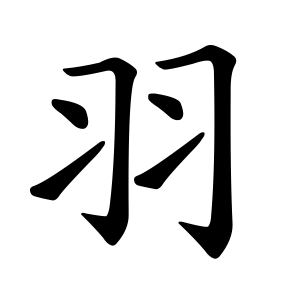羽
- feather, wing;
Etymology
It is an ideogram that depicts the shape of a bird’s wings.
Alternative forms
Characters with 羽
10 strokes
羽
깃
우
git
u
Kangxi radical:124
Strokes:6
Unicode:U+7FBD
Cangjie input:
- 尸一尸戈一 (SMSIM)
- 尸竹尸竹竹 (SHSHH)
Composition:
- ⿰ 习 习 (G H T J V)
- ⿰⿹ 𠃌 ⿱ 丿 丿⿹𠃌⿱丿丿 (K)
- U+FA1E
